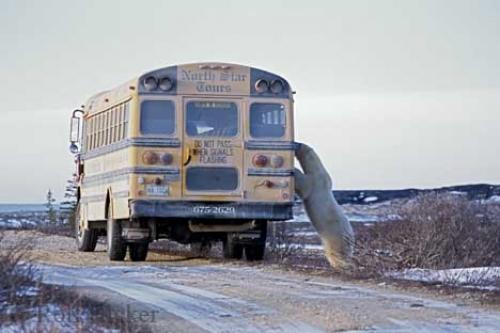It could be the premise of a new horror movie — based on an all-too-true story. We have “a new and unusual threat: a polar bear stuck on land due to climate change”:

Five scientists studying shorebirds in northern Alaska had to themselves take flight after a polar bear showed up at a time of year it should have been out on ice floes hunting seals.
Polar bears would normally be out on sea ice in spring and summer, the group said in a statement, “but with recent warming the ice is miles from shore and bears are becoming increasingly trapped on land well away from their usual seal prey … “
“It is ironic that our efforts to understand how climate change is affecting wildlife were disrupted by the top Arctic predator displaced by climate,” Steve Zack, one of the evacuated experts, said in the statement.
Polar bears are known to be the “world’s largest land source of irony.”
The scientists should just be glad they didn’t meet an even more fearsome beast — the Grolar bear. In the event you should run into an angry polar bear or grolar bear, here are some facts about them:
Polar bears are the world’s largest land predators. They top the food chain in the Arctic, where they spend most of their time on the pack ice or in the water, hunting down their favorite food — seals.
A single polar bear can consume 100 pounds / 45 kilos of meat at one feeding, and needs about one seal per week, or 50 to 75 seals per year, to survive. The bears eat as much as they can during the winter to get fat. They then live off the fat in their bodies during the summer when the ice melts and it is harder to catch seals.
The polar bear’s white coat provides camouflage in the ice and snow, not for protection, but to make them almost invisible as they stalk their prey.
This post was created for ClimateProgress.org, a project of the Center for American Progress Action Fund.


